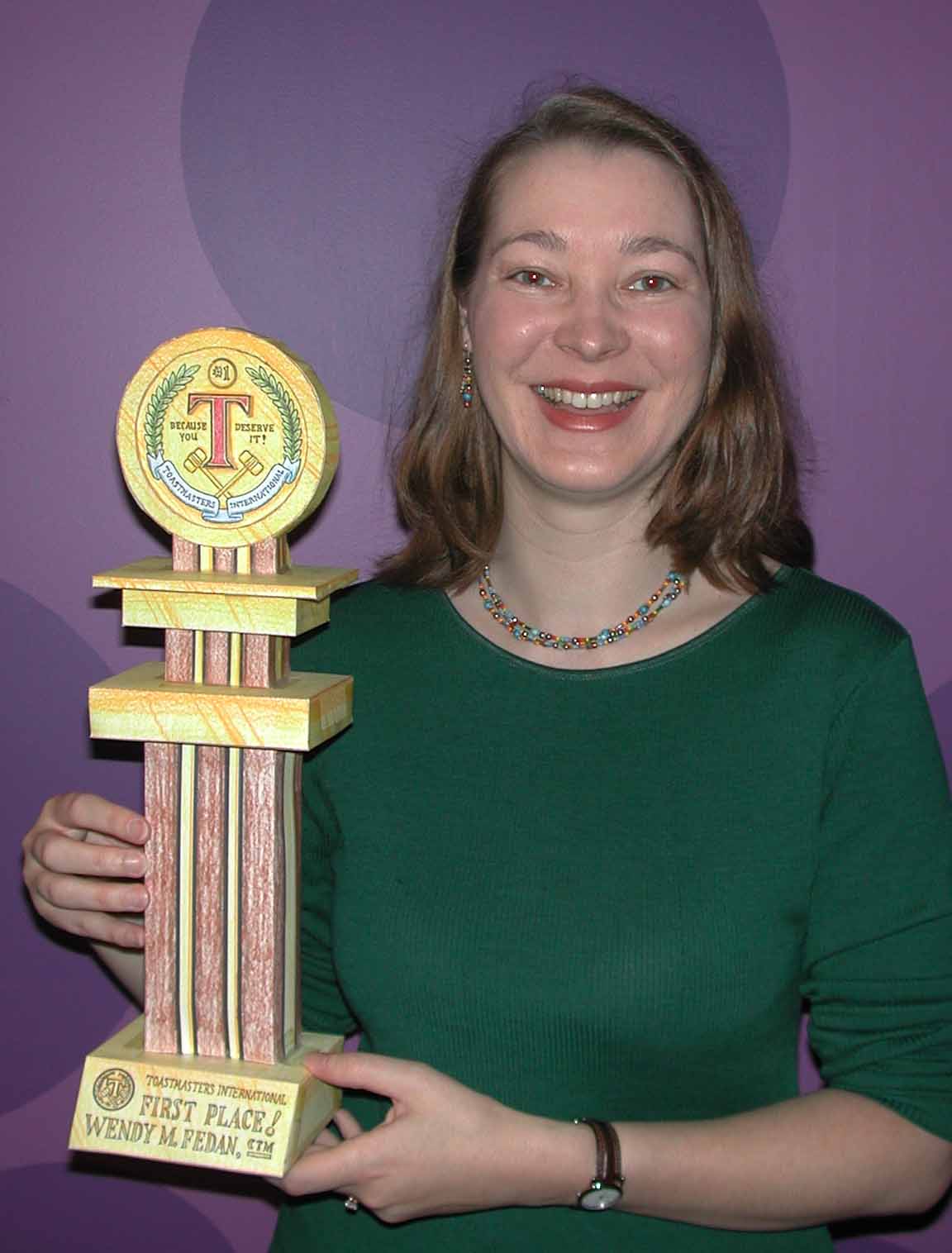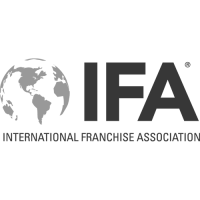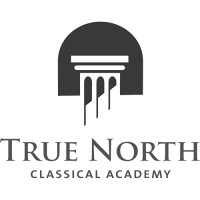Speaking about Speaking: Toastmasters International

International group’s mission: Improve speaking skills and leadership qualities
Every Friday precisely at noon from a small dining room in the back of Duffey’s sports bar in Boynton Beach Florida, someone bangs the gavel five times. To the group of 30 men and women that have gathered for the weekly luncheon meeting of the Bill Gove Golden Gavel Toastmasters Club, it’s a signal to get down to the business of speaking. For the next 60 minutes, the members will learn, laugh, and work toward the common goal Toastmasters International: improve communications and leadership skills.
Founded in 1924, Toastmasters International has helped over 4 million people to become more confident speakers and leaders. Today, over 270,000 Toastmaster members improve their speaking and leadership skills by attending one of the 13,000 clubs that make up the global network of meeting locations.
For this local Florida chapter on this rainy Friday, Toastmaster Ed Lamont starts the meeting by standing at the front of the room and leading the group in a Pledge of Allegiance. Looking relaxed yet professional, Lamont- an experienced speaking professional with a Distinguished Toastmasters Certification- presents a brief introduction of the forthcoming meeting and then hands control of the meeting to Becky Woodbridge for “Table Topics,” ten minutes of improvisational speeches.
Table Topics: Impromptu speeches cultivate fast thinking and snappy delivery
Wearing a long pink coat, and leather boots, Topicmaster Becky looks like she’s dressed for winter. Becky starts by sharing that she is dressed this way because in her travels as a flight attendant, she has noticed the changing colors of the leaves. Fall is here. And for the next ten minutes, she calls on several members to give a brief improvisational speech relevant to her seasonal topic of Fall.
“What is your favorite part of Fall?….Share Ross!”
To a round of thunderous applause the young long-haired musician leaps from her chair and happily walks to the front of the room to shake Becky’s hand. Share begins her short speech by saying that as a Floridian, she has “no experience” with Fall. So she deviates from the topic to tell the story about the time she was performing at a concert, and was FallING off the stage. At two minutes, a designated timer turns on the red light and Share concludes to laughter and rousing applause, and then hands control back to Becky for several more short seasonal stories.
Today, Table Topics is fun and jovial, but it’s an essential element of any Toastmasters meeting, offering valuable practice and skills in speaking with poise and professionalism. Some speakers have refined their improvisational speaking skills to compete in national speaking competitions.
“Table Topics helps me to think on my feet quickly and creatively on the spur of the moment,” says Becky. She adds that the extemporaneous delivery has improved, and she’s gained more confidence while speaking than when she first started with Toastmasters one year earlier.
After Table Topics, Topic Master Becky hands control of the meeting back to Toastmaster Ed, who transitions to the formal prepared speeches.
Prepared Speeches: Writing and Speaking Refined
The prepared speeches are the backbone of Toastmasters International. Guided by any one of a dozen “manual speeches,” Toastmaster members work on their own time to write, rehearse, and deliver a speech on any topic. The manuals provide direction and structure for each speech. Some speeches are designed to be informative. Some are persuasive. Others are humorous. All speeches give members a chance to flex their creative muscle, sharpen their speaking, and refine their delivery. The entry-level manual, “The Competent Communicator” consists of ten speeches, each of which is typically five to seven minutes. The manual’s first speech is called The Ice-Breaker, designed to have members share a bit about themsleves.
Like a professional emcee at the Academy Awards, Toastmaster Ed smoothly segues from one speaker to the next, introducing each of the speakers, and quipping a comment. His presence provides flow and movement; learned skills which can be integrated to any professional environment to amplify presence, delivery, and professionalism.
Evaluations provide feedback and improvement opportunities
But the speakers at Toastmasters are not just speaking for fun; they’re speaking to succeed. Each speech is critiqued by an Evaluator, who speaks for two to three minutes, providing immediate feedback, analysis, and input. This “Oreo sandwich” method encourages evaluators to buffer their bite from becoming too abrasive with their critique. Praise and accolade, then a few points for improvement, then overall praise again.
In addition to the evaluator, each Toastmasters meeting has a designated “Ah Counter” who keeps track of crutch words and filler words. These words- “Um”…“ahhh”…“you know”…“like” diminish from any speakers’ delivery. By eliminating these empty words, anyone can sound more polished, professional, and in-control…even in casual conversation. In some Toastmasters clubs, Ah Counters ring a bell our sound a buzzer when a speaker utter the ums. Others simply keep a log. Toastmasters are encouraged to simply “pause” or say nothing when they can’t think of the right word to say.
And to keep speakers within their allocated time, all meetings have a designated “Timer” who tracks time and provides signals to each speaker when their time is nearly complete.
Fueling the fire of success since 1924
Ultimately, good communications drives success. Since 1924 when Ralph Smedley led the first meeting of what eventually became Toastmasters International, the group has helped millions of people to their members to speak powerfully, listen effectively, gain valuable leadership skills and develop self-confidence and overcome shyness or fear. In today’s challenging economic times, the skills gained at Toastmasters help its members gain a clear competitive edge.
To the members of the Bill Gove Golden Gavel Toastmasters Club, their group is much more than just improving speaking skills. It’s helped to forge friendships, build businesses, and fuel the fire of success.
“Toastmasters has become a second family for me; a home away from home,” explains Chim Francisco. Chim travels over 60 miles every Friday to attend this club, empowered by the supportive network of colleagues, all focused on self-improvement. “Toastmasters provides a tried and proven pathway to personal and professional development – one project at a time!” she enthusiastically declares.
And she’s doing it. In just nine months, the petite 37-year-old from Bacolod City, Philippines has rocketed to the top in her club, quickly completing her Competent Communicator manual, and now working on an Advanced Communicators Bronze Certification.
Speaking into the future
Chim is reflective of the new generation of Toastmasters. The organization- which as been criticized for being stodgy and old-fashioned- is adapting to changing times. They recently updated their brand with a contemporary logo and a renewed emphasis on helping its members improve their leadership skills. The group is also broadening their focus on mentoring and technology, with more articles on their website focused on better use of PowerPoint, as well as encouraging the use of technology as an enabler for more powerful communications.
Leadership is an increasingly desired commodity
In today’s interconnected world of technical freedom, commanding control of a group at a conference or business environment is a valued commodity. Toastmasters is helping increase leadership skills by providing training and mentorship. This increased focus on leadership can translate to improved performance on the job or in the world in general.
Matt Kinsey says that Toastmasters has been invaluable to him and many of his colleagues for helping achieve success, both personally and professionally.
“Toastmasters is a ‘leadership laboratory’ where you learn your basic skills of leadership. It’s a great environment to fail and make mistakes,” explains Kinsey, an IT business consultant, and also Toastmaster District 47’s Lieutenant Governor of Education and Training.
“HR managers today are looking for people with strong leadership skills…people who have been through the ROTC or similar programs. Toastmasters helps people to become stronger leaders”

And Toastmasters International is a recognized force in the professional world, it’s helped to cultivate some of the world’s best known leaders and celebrities. From actor Leonard Nimoy to TV celebrity Chris Matthews, the attraction for self-improvement is compelling. It’s a diverse tapestry of men and women of all ages and backgrounds around the world. Each has a story to share, and a desire for self-improvement or connection.
It’s 12:55pm, and the Bill Gove Golden Gavel club is wrapping up their meeting. Toastmaster Ed is asking for volunteers for the next week’s meeting. Camaraderie (or peer pressure?) prevail and in a few moments all the meeting roles are filled. The group is wrapping up exactly on time at 1pm. Most members shake hands, say goodbye to drive home in the rainy weather in the Sunshine State to continue their day.
In the shadow of a great speaker
Back in the restaurant, the club’s president Ed Lamont lingers a bit longer, working to remove the group’s ribbon-laden banner from the wall, restoring the room to its sports-bar normalcy. Lamont says that Mr. Bill Gove, who passed away in 2001 at the age of 89, would be proud not only of the group he helped to foster, but the growth of Toastmasters and popularity of speaking, in general. For the members of his namesake group…and for Toastmasters around the world, Gove’s legacy and vision lives on.
Whether it’s just about meeting a new friend, or accomplishing great new skills, Toastmasters International continues its mission to help people achieve new heights and accomplish greatness.
Bill Gove Golden Gavel Toastmasters Club, Leadership, speaking help, Toastmasters, training, What is Toastmasters



























